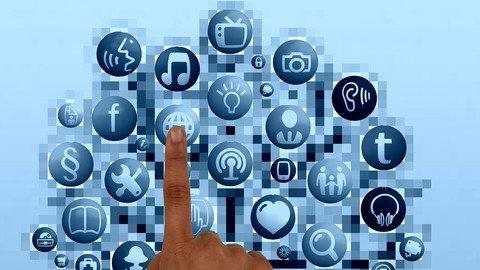Most Commented
Principles Of Macroeconomics - College Or Ap Level




Description material

Published 10/2023
MP4 | Video: h264, 1280x720 | Audio: AAC, 44.1 KHz
Language: English | Size: 7.23 GB | Duration: 11h 33m
A college level course in Macroeconomics, including global economics, monetary and fiscal policy and political economy
What you'll learn
Macroeconomic Theory
The course will provide a deeper background in diverse contributors and their impacts on economic thought and analysis
Measures of unemployment, inflation, national income, inequality and wealth and their roles in shaping policy
Achieving sustainable economic growth and stability
Effective functioning of the financial system
Monetary and Fiscal Policy
Requirements
Basic mathematics. My Principles of Microeconomic course will help with foundational information.
Description
Why Study Economics? Economics seeks to solve the problem of scarcity, which is when human wants for goods and services exceed the available supply. A modern economy displays a division of labor, in which people earn income by specializing in what they produce and then use that income to purchase the products they need or want. The division of labor allows individuals and firms to specialize and to produce more for several reasons: a) It allows the agents to focus on areas of advantage due to natural factors and skill levels; b) It encourages the agents to learn and invent; c) It allows agents to take advantage of economies of scale. Division and specialization of labor only work when individuals can purchase what they do not produce in markets. Learning about economics helps you understand the significant world's problems. Today prepares you to be a good citizen and helps you become a well-rounded thinker.Microeconomics and macroeconomics are two different perspectives on the economy. The microeconomic perspective focuses on parts of the economy: individuals, firms, and industries. The macroeconomic perspective looks at the economy as a whole, focusing on goals like growth in the standard of living, unemployment, and inflation. Macroeconomics has two types of policies for pursuing these goals: monetary policy and fiscal policy.Course Descriptor: An introduction to the economic principles of employment, money, and growth. This course will teach students about significant macroeconomic measures and policies. Students will learn how measures of unemployment, inflation, national income, inequality, and wealth shape policy. We also focus on achieving economic growth and sustainability through the effective functioning of the financial system, monetary and fiscal policies, and international trade policies. Learning Objectives: Students will develop an understanding and basic proficiency in the theory and application of macroeconomic concepts. The text uses conversational language and ample illustrations to explore economic theories and provides many examples using fictional and real-world applications. We will explore recent developments and provide a more profound background on diverse contributors and their impacts on economic thought and analysis.
Overview
Section 1: Introduction
Lecture 1 Introduction
Lecture 2 Choice In A World of Scarcity
Lecture 3 Supply and Demand
Lecture 4 Labor and Financial Markets
Lecture 5 Elasticity
Section 2: Macroeconomic Theory
Lecture 6 The Macroeconomic Perspective
Lecture 7 Economic Growth
Section 3: Inflation Unemployment and Trade
Lecture 8 Unemployment
Lecture 9 Inflation
Lecture 10 International Trade and Capital Flows
Section 4: Economic Schools of Thought
Lecture 11 Aggregate Supply and Demand
Lecture 12 The Keynesian Perspective
Lecture 13 The Neoclassical Perspective
Section 5: Money, Banking and Financial Markets
Lecture 14 Money and Banking
Lecture 15 Monetary Policy and Bank Regulation
Lecture 16 Exchange Rates and International Capital Flows
Section 6: Fiscal Policy
Lecture 17 Government Budgets and Fiscal Policy
Lecture 18 The Impacts of Government Borrowing
Section 7: Globalization and the Global Economy
Lecture 19 Worldwide Macroeconomic Policy
Lecture 20 International Trade
High School and College students,Policy makers,Business owners and entrepreneurs
Buy Premium Account From My Download Links & Get Fastest Speed.
https://alfafile.net/file/AAUCa/Principles_of_Macroeconomics_College_or_AP_Level.part1.rar
https://alfafile.net/file/AAUC5/Principles_of_Macroeconomics_College_or_AP_Level.part2.rar
https://alfafile.net/file/AAUCt/Principles_of_Macroeconomics_College_or_AP_Level.part3.rar
https://alfafile.net/file/AAUCM/Principles_of_Macroeconomics_College_or_AP_Level.part4.rar
https://alfafile.net/file/AAUCK/Principles_of_Macroeconomics_College_or_AP_Level.part5.rar
https://alfafile.net/file/AAUCf/Principles_of_Macroeconomics_College_or_AP_Level.part6.rar
https://alfafile.net/file/AAUCY/Principles_of_Macroeconomics_College_or_AP_Level.part7.rar
https://alfafile.net/file/AAUCD/Principles_of_Macroeconomics_College_or_AP_Level.part8.rar
https://rapidgator.net/file/5ed6417d5470818c09940f2392e7d9bb/Principles_of_Macroeconomics_College_or_AP_Level.part1.rar.html
https://rapidgator.net/file/80c5d6f30639882910a72f087619ebc8/Principles_of_Macroeconomics_College_or_AP_Level.part2.rar.html
https://rapidgator.net/file/c0e526db0e7109723f180f3270b76cbc/Principles_of_Macroeconomics_College_or_AP_Level.part3.rar.html
https://rapidgator.net/file/feb8d692673e7b872e5a1d564e0ddc97/Principles_of_Macroeconomics_College_or_AP_Level.part4.rar.html
https://rapidgator.net/file/d9d794b84f7283e17f4db2130ddae59f/Principles_of_Macroeconomics_College_or_AP_Level.part5.rar.html
https://rapidgator.net/file/0805d66c034faba1497119a1d4bdeae5/Principles_of_Macroeconomics_College_or_AP_Level.part6.rar.html
https://rapidgator.net/file/ffd7013278be051213c15358550940d6/Principles_of_Macroeconomics_College_or_AP_Level.part7.rar.html
https://rapidgator.net/file/071da78419e9444a0c564f793d35ab1b/Principles_of_Macroeconomics_College_or_AP_Level.part8.rar.html
Join to our telegram Group
Information
Users of Guests are not allowed to comment this publication.
Users of Guests are not allowed to comment this publication.
Choose Site Language
Recommended news
Commented


![eM Client Pro 9.2.1735 Multilingual [Updated]](https://pikky.net/medium/wXgc.png)






![Movavi Video Editor 24.0.2.0 Multilingual [ Updated]](https://pikky.net/medium/qhrc.png)

